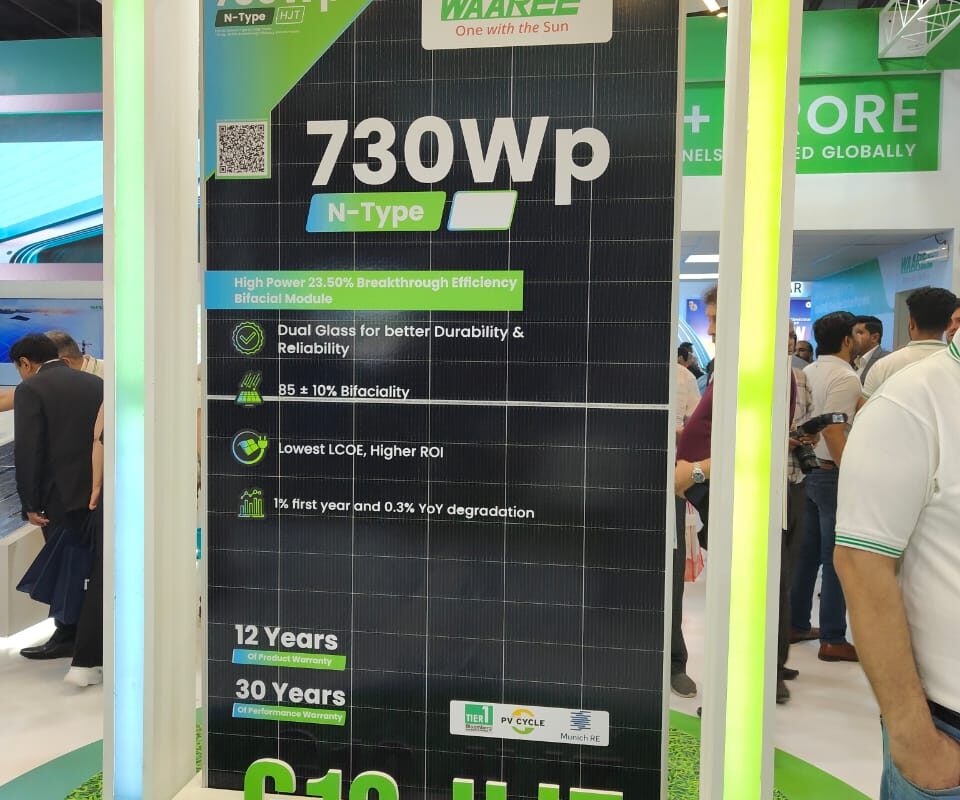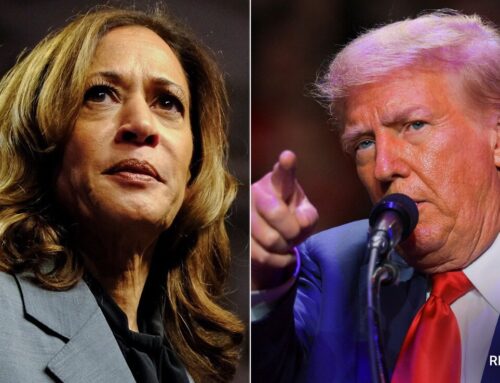Key takeaways from Renewable Energy India Expo 2024
October 13, 2024
Indian solar manufacturers are scaling their annual capacities in a big way, many to 10 GW or beyond, with the government initiatives setting the stage for big deployment. Most of the production lines are running at full capacities. With the ALMM mandate, the competition to serve the demand has shifted among domestic counterparts.
“The demand has dramatically increased with the prime minister’s clarion call for 500 GW of installed electricity capacity from non-fossil fuel sources by 2030. And that doesn’t include green hydrogen. If we add hydrogen, the number goes even higher,” says Amit Paithankar, CEO of India’s largest solar module manufacturing company Waaree Energies.
Notably, of the 500 GW non-fossil fuel based capacity targeted by 2030, majority will be from renewable sources such as solar and wind. To meet the goal, the government has decided to invite bids for 50 GW of renewable energy capacity per year (solar, wind, hybrid wind-solar, round-the-clock RE with or without storage), including 10 GW of wind capacity, from fiscal 2023-24 to the fiscal 2027-28 period.
This capacity addition is over and above the RE capacities being deployed under government schemes like rooftop solar and PM-KUSUM.
“A lot of developers are also optimistic about project deployment. The stage is set to move towards that.. Residential PV installation has got a substantial fillip with the launch of PM Suryaghar Muft Bijli Yojana, which gives incentives for home buyers to set up rooftop solar systems. On the agricultural side, KUSUM scheme is a big driver,” said Paithankar.
Gagan Chanana, CEO and joint managing director, Jakson Distributed Energy Business, said they are seeing an increasing demand for rooftop solar from the commercial and industrial (C&I) sector too, especially the manufacturing segment. Jakson Distributed Energy Business offers hybrid systems based on customer requirements, like rooftop solar plus battery energy storage, solar plus diesel generating systems, or solar plus DG plus BESS. The company offers complete energy solutions with its manufacturing presence across PV modules, DG sets and BESS.
Waaree is setting up a 5.4 GW cell manufacturing capacity, which will help it meet the DCR module demand. The first cell from the facility is expected to be out within this quarter.
“Our cell factory is very close to commissioning. In fact, most of the equipment are getting commissioned. It’s a 5.4 GW cell manufacturing capacity, which will be fully operational by March 2025. Out of this, 4 GW is TOPCon and 1.5 GW mono PERC. The first cell from the facility will be out in the current Oct-Nov-Dec. quarter. Apart from that, Waaree is setting up 6 GW of wafer-to-module capacity in Odisha under PLI Scheme, which will start production in 1.5-2 years from now,” said Paithankar.
Gujarat-based Rayzon Solar is also among those with aggressive manufacturing expansion plans. The company will expand its solar module manufacturing capacity to 12 GW per year by Sept. 2025, from the current 4 GW.
Goldi Solar will reach a PV module production capacity of 14 GW by Dec. 2025. Currently, the company has a manufacturing capacity of 3 GW, equipped to produce TOPCon and mono PERC modules.
Exports
Many manufacturers are eyeing overseas markets, especially USA, where various measures and import tariffs imposed by the US government have restricted Chinese modules’ access to the market.
“The US is a very good spot for Indian module manufacturers because the Chinese dominance is not there. There is Section 301 on PV cells, which puts 50% duty on PV cells assembled or not, in addition to antidumping duty, countervailing duty etc. Even if you pay the duty, there is a lot of investigation by the US Customs and Border Protection Agency [to prohibit the entry of goods mined, produced, or manufactured wholly or in part in Xinjiang region under The Uyghur Forced Labor Prevention Act],” Sohil Barad, general manager-global sales, Grew Energy, told pv magazine.
Grew Energy is a renewable energy venture under Chiripal Group, which has 2.8 GW of PV module capacity already operational in Jaipur and expects to have a cumulative module capacity of 6.4 GW operational by Q2 2025 with additional 3.6 GW coming up in Jammu.
“[Among other potential export markets] the European market is not favorable for Indian module manufacturers right now due to the dominance of Chinese products there. Their pricing is less than our cost of production, anywhere from 8 cents to 10 cents per Watt. In Intersolar Munich 2024, the pricing was around 9.5 to 10 cents [per Watt] for the TOPCon modules from China,” said Barad.
“Europe can be a good spot for Indian module manufacturers once the European government comes up with strict rules for Chinese companies similar to US’ Uyghur Forced Labor Prevention Act, countervailing duty or anti-dumping duty on cell and modules,” Barad added.
Adani’s current PV production serves 50:50 demand from domestic and export markets. The company expects to reach integrated solar cell and module production capacity of 10 GW by mid 2026.
G12R modules
Manufacturers anticipate solar modules based on 210 rectangular silicon wafer (G12R) cell technology to become a go-to product for utility-scale solar installations as these lead to a reduction in the overall cost of the PV plant. So, the REI Expo this year was dominated by such modules from various companies including Adani, Goldi Solar, Jakson, Premier Energies, Rayzon, Saatvik, and Waaree.
“The basic advantage of this product is that it gives you a higher power. And when you are getting a higher power, you are able to have lesser number of modules for the same capacity. If you get 50 Wp extra per module, it means every 10 modules you are getting 500 Wp extra. So you may reduce one module every 11 modules. With less number of modules, your structural and BOS cost also reduce,” said Vikas Arya, vice president- product development & strategy, Jakson Engineers, adding that G12R modules will be a go-to product for the utility sector next year because of their benefit in reducing the overall cost of the PV system.
Arya said Jakson’s new and upcoming lines are capable of making 16 BB modules based on G12 rectangular as well as normal square cells. The company is also working on the upcoming zero-busbar cell technology that is likely to become popular maybe in next one to two years.
Among other highlights of the REI show was the prototype of a back-contact TOPCon solar module by Orient Solar. The company expects to launch the back-contact module in two years’ time. Headquartered in New Delhi, Orient Solar makes pv panels, batteries, and hybrid solar inverters with copper transformers.
This content is protected by copyright and may not be reused. If you want to cooperate with us and would like to reuse some of our content, please contact: editors@pv-magazine.com.
Search
RECENT PRESS RELEASES
Related Post





